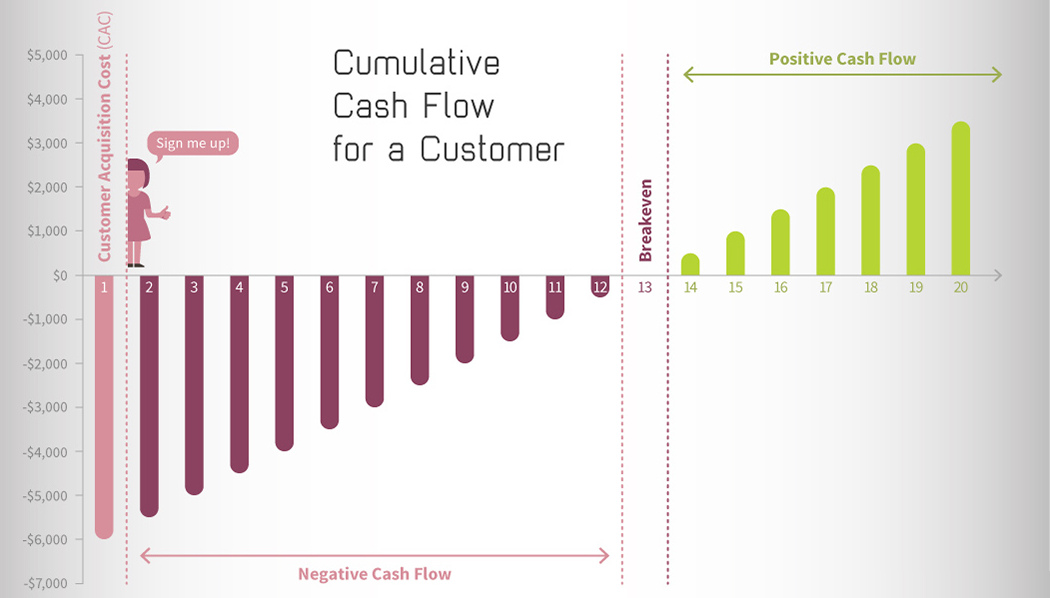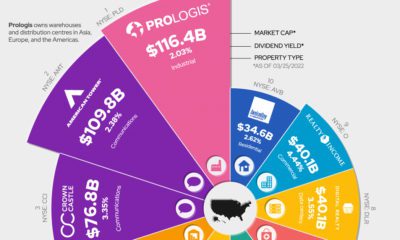And as far as tech companies go, the Software as a Service (SaaS) model is as good as it gets. It provides predictable, quantifiable, and fast-growing revenue for any company that can execute correctly – and everyone from venture capitalists (like Marc Andreessen) to asset managers (like Blackrock) love investing in companies with these traits. Today’s infographic from TIMIA Capital explains why this is the case.
What is SaaS?
Unlike in years past when software was bought in a physical form at a store, much of today’s software runs right off the cloud. This is made possible by ubiquitous broadband access and powerful computers – and SaaS allows users to consume software in a different way:
Customers connect to the software online Customers are charged on an ongoing subscription basis for access The latest version of the software is automatically provided to the user
SaaS has immeasurable benefits over traditional software distribution models.
It can be used everywhere, including on mobile It has easy integration with plug-ins or add-ons There is no overhead, packaging, or distribution costs It limits piracy It has a flexible and clear licensing model Software is always up-to-date User data can be collected and new features can be tested easily
While the benefits of SaaS to the end user are plenty, it has even more interesting properties as an investment.
SaaS Economics
Instead of relying on one-time transactions or upfront fees, SaaS is built around smaller, subscription-based transactions that recur each month or year. Recurring revenue makes SaaS extremely predictable, measurable, and built to scale. Unlike some other types of startups, measuring performance in SaaS is heavily focused on growing important metrics like LTV (lifetime value) or MRR (monthly recurring revenue), while minimizing CAC (customer acquisition costs) and churn (the rate at which customers stop buying the product). As a result of the inherent attributes of the SaaS model, the industry has been exploding with growth. The BVP Cloud Index, which tracks 56 publicly traded cloud companies, is up 396% since 2011. That easily beats out benchmarks like the Nasdaq, S&P 500, and DJIA by triple digits.
Other Reasons to Love SaaS
Aside from performance, here are a few last reasons that elite investors love SaaS: Costs go down: As SaaS businesses scale, the cost of servicing each customer goes down. In the long run, this helps lead to a growing, predictable cash flow. Buyouts: It’s common for SaaS businesses to get gobbled up by the bigger fish in the pond, which often offers investors a premium on the current stock price. Low Barriers: The SaaS model has erased barriers to entry for software, allowing new entrepreneurs to enter the fold in almost every niche possible. This creates a wide array of new opportunities for investors, as well. on But fast forward to the end of last week, and SVB was shuttered by regulators after a panic-induced bank run. So, how exactly did this happen? We dig in below.
Road to a Bank Run
SVB and its customers generally thrived during the low interest rate era, but as rates rose, SVB found itself more exposed to risk than a typical bank. Even so, at the end of 2022, the bank’s balance sheet showed no cause for alarm.
As well, the bank was viewed positively in a number of places. Most Wall Street analyst ratings were overwhelmingly positive on the bank’s stock, and Forbes had just added the bank to its Financial All-Stars list. Outward signs of trouble emerged on Wednesday, March 8th, when SVB surprised investors with news that the bank needed to raise more than $2 billion to shore up its balance sheet. The reaction from prominent venture capitalists was not positive, with Coatue Management, Union Square Ventures, and Peter Thiel’s Founders Fund moving to limit exposure to the 40-year-old bank. The influence of these firms is believed to have added fuel to the fire, and a bank run ensued. Also influencing decision making was the fact that SVB had the highest percentage of uninsured domestic deposits of all big banks. These totaled nearly $152 billion, or about 97% of all deposits. By the end of the day, customers had tried to withdraw $42 billion in deposits.
What Triggered the SVB Collapse?
While the collapse of SVB took place over the course of 44 hours, its roots trace back to the early pandemic years. In 2021, U.S. venture capital-backed companies raised a record $330 billion—double the amount seen in 2020. At the time, interest rates were at rock-bottom levels to help buoy the economy. Matt Levine sums up the situation well: “When interest rates are low everywhere, a dollar in 20 years is about as good as a dollar today, so a startup whose business model is “we will lose money for a decade building artificial intelligence, and then rake in lots of money in the far future” sounds pretty good. When interest rates are higher, a dollar today is better than a dollar tomorrow, so investors want cash flows. When interest rates were low for a long time, and suddenly become high, all the money that was rushing to your customers is suddenly cut off.” Source: Pitchbook Why is this important? During this time, SVB received billions of dollars from these venture-backed clients. In one year alone, their deposits increased 100%. They took these funds and invested them in longer-term bonds. As a result, this created a dangerous trap as the company expected rates would remain low. During this time, SVB invested in bonds at the top of the market. As interest rates rose higher and bond prices declined, SVB started taking major losses on their long-term bond holdings.
Losses Fueling a Liquidity Crunch
When SVB reported its fourth quarter results in early 2023, Moody’s Investor Service, a credit rating agency took notice. In early March, it said that SVB was at high risk for a downgrade due to its significant unrealized losses. In response, SVB looked to sell $2 billion of its investments at a loss to help boost liquidity for its struggling balance sheet. Soon, more hedge funds and venture investors realized SVB could be on thin ice. Depositors withdrew funds in droves, spurring a liquidity squeeze and prompting California regulators and the FDIC to step in and shut down the bank.
What Happens Now?
While much of SVB’s activity was focused on the tech sector, the bank’s shocking collapse has rattled a financial sector that is already on edge.
The four biggest U.S. banks lost a combined $52 billion the day before the SVB collapse. On Friday, other banking stocks saw double-digit drops, including Signature Bank (-23%), First Republic (-15%), and Silvergate Capital (-11%).
Source: Morningstar Direct. *Represents March 9 data, trading halted on March 10.
When the dust settles, it’s hard to predict the ripple effects that will emerge from this dramatic event. For investors, the Secretary of the Treasury Janet Yellen announced confidence in the banking system remaining resilient, noting that regulators have the proper tools in response to the issue.
But others have seen trouble brewing as far back as 2020 (or earlier) when commercial banking assets were skyrocketing and banks were buying bonds when rates were low.
















